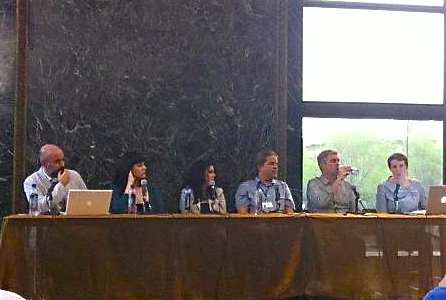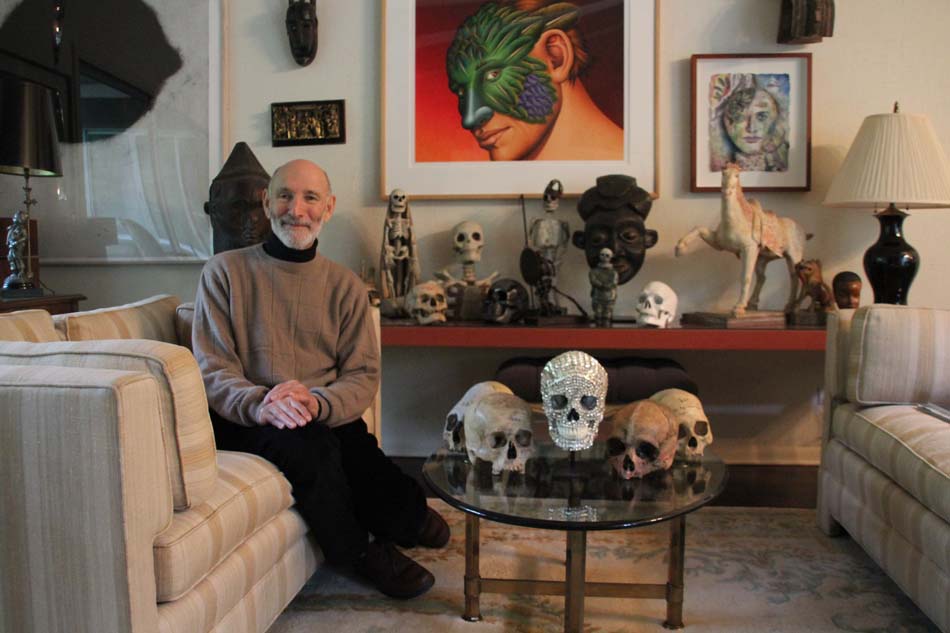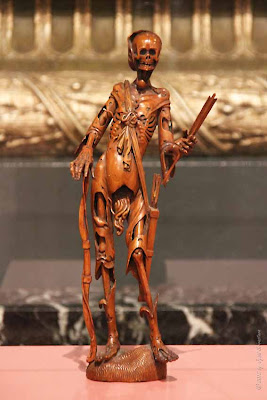Earlier this month I traveled to Chicago to be on a panel at the Chicago Cultural Center. Surprise surprise guys, it was a panel about death, The Beginners Guide to Dying: Contemporary Psychopomps in Dialogue.

Here’s me paneling it up with the two coordinators (the ones with laptops), an architect who wanted to turn the old post office on the Chicago River into an urban cemetery, and two music thanatologists who play harps with the biorhythms of a dying person.

The Chicago Cultural Center is an gorgeous old building by the lake that has events, concerts, and multiple art exhibits going at once. Until July 8th, they are showing the art collection of one Richard Harris, gentleman, art collector, and all around dapper gentleman. Apparently his collection of “over 1500 objects exploring the related themes of death and mortality” is one of the most popular exhibits the Cultural Center has ever had.
I knew that Mr. Harris had a memento mori (“remember you will die”) art collection, I was just totally unprepared for how good it was. One of my areas of interest in college was the art of the Medieval macabre, it was one of the gateway drugs that led me to become a mortician. I can be kind of snobby when it comes to death art (no flaming skulls on t-shirts for me). But when I walked it to the hall my first day in Chicago it was like a damn wonderland. “Is that a 15th century skull’s head church lintel? Is that a Albrecht Dürer woodcut? Are those 16th century Vanitas paintings? WHAT IS GOING ON HERE, WORLD OF MY FANTASIES.”

Mr. Harris came to the panel discussion and then graciously offered to give me a tour of his collection the next morning. Here we are in the collection, in front of a human skeleton. Please note that Mr. Harris is also a tall man, I am just obscenely tall.
I asked Richard what his first piece was, the piece he purchased that really set off his collection. He pointed to the Utrecht Vanitas Still Life, 1643, which had been my favorite when I first saw it the day before. It’s like the Helen of Troy of death art, the face that launched a thousand death art pieces.

Could this piece be any more glorious? In person it’s even more perfect. A reminder to enjoy but also to forget luxury and beauty, as there is nothing that will last. A call to exist in the moment with any way you perceive beauty.

Richard absolutely humored me when I wanted to geek out about the transition from decaying corpse imagery to skeleton imagery in the 1500’s. But he was very honest in saying “I’m not an art historian, I just collect what is beautiful.” Which is totally the right way to do it and made me feel shame, shame I say!

St. Jerome in his Study, Reymerswade from 1560. No big deal.

Good/Bad Man at the hour of Death, Thomas Chambers, 1783

Memento Mori – Unknown [German] Early 17th century, Fruitwood

Ivo Saliger The Doctor 1921

Tchelitcheu Living Shell 1944

Human Skulls from 16th to 18th century, Pre Colombian Inca



There is death art in the collection from all around the world, all different eras, and many famous artists. If you are anywhere remotely near Chicago it is worth going while you still can (because it’s closing in a month and we could all die tomorrow).
Please visit Richard Harris’s website. Thanks to the MeMo Organization and the Cultural Center for having me + to Jyoti Srivastava for lending me her pictures for this post.
